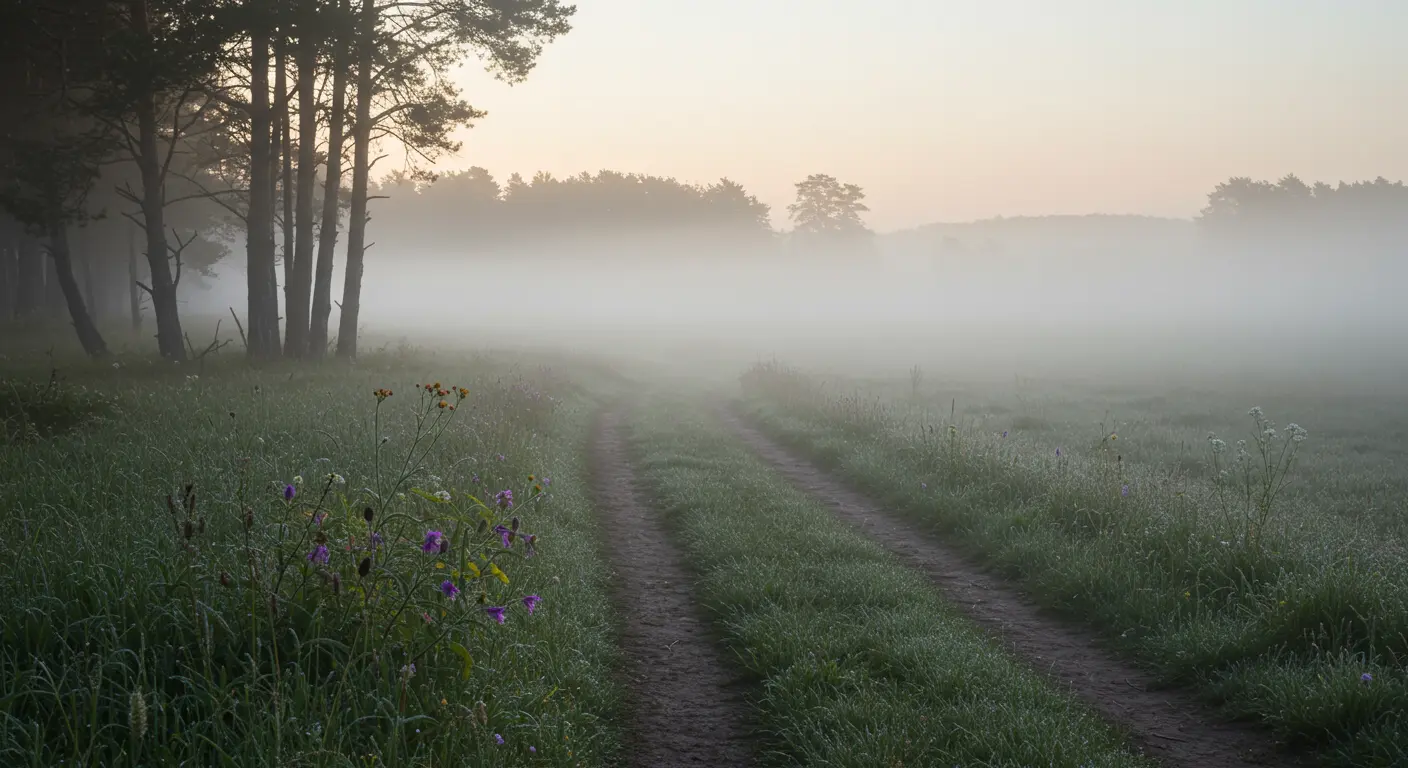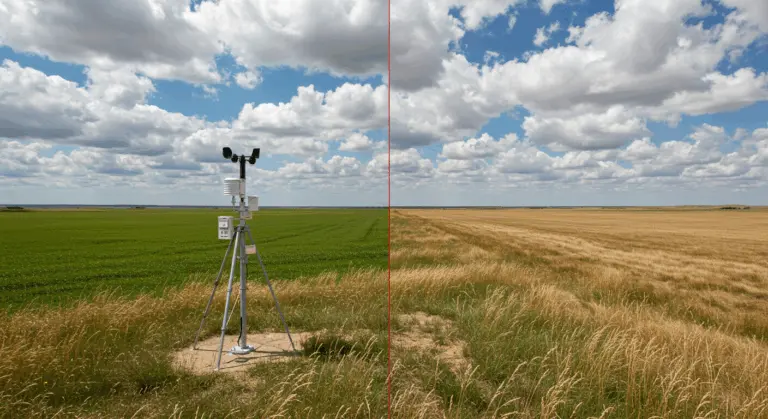How Does Fog Form – Understanding the Process
Understanding Fog – What Is It?
Fog is essentially a cloud that has descended to ground level, composed of countless tiny water droplets or ice crystals suspended in the air. What distinguishes fog from its gentler cousin, mist, is visibility—fog reduces it to less than 1 kilometer (0.62 miles), creating a more dramatic impairment of sight.
This ground-hugging phenomenon reaches its peak during autumn and winter months. Its proximity to the surface makes it particularly disruptive to human activities—from transportation networks grinding to a halt to agricultural operations facing unexpected challenges.
The Process of Fog Formation
Fog emerges when water vapor undergoes a transformation, condensing into microscopic droplets. This process unfolds when air temperature drops to its dew point—that critical threshold where air becomes saturated with moisture—requiring the gap between them to narrow to less than 2.5°C (4.5°F).
Several mechanisms can trigger this condensation process. Picture warm, moist air drifting over cooler surfaces—the sudden temperature shock forces the air below its dew point. Alternatively, radiational cooling occurs after sunset, when clear skies become windows for heat to escape from the ground, steadily chilling the air layer directly above.
The water droplets within fog are remarkably tiny—typically measuring just 10 to 15 microns in diameter. These minuscule spheres remain suspended rather than falling as precipitation, creating that distinctive cloudy veil that shrouds the landscape in mystery.
Key Conditions for Fog Formation
Fog demands two fundamental conditions to materialize: either the air must be cooled to its dew point, or it must absorb enough moisture to achieve saturation. Though simple in concept, the actual process involves complex interactions.
Several factors influence these conditions:
-
High Relative Humidity: Provides the necessary moisture for condensation.
-
Clear Skies: Allows for greater radiational cooling at night.
-
Light Winds: Gentle winds (under 5 mph) mix the cooling air without dispersing the fog.
-
Geography: Valleys, coastlines, and areas near water often provide ideal moisture and temperature patterns.
Fog typically forms at night, developing overnight or greeting the early morning hours when temperatures reach their lowest ebb. Seasonally, autumn and winter provide ideal conditions for fog formation, thanks to extended nights and the dramatic temperature swings between day and darkness.
Types of Fog and Their Characteristics
Meteorologists have organized fog into distinct categories based on their formation mechanisms. Four primary types dominate the classification:
These varieties differ dramatically in their formation, characteristics, duration, and scope. Some manifest as localized patches, while others cover extensive areas. Fog density spans an impressive spectrum—from delicate wisps of light mist to impenetrable walls that reduce visibility to virtually zero.
Specialized types of fog include:
-
Freezing Fog: Super cooled droplets freeze on contact with surfaces, creating ice.
-
Hail Fog: Forms from evaporating hail or other precipitation.
-
Fog Bow: A white, rainbow-like arc caused by light refracting through small water droplets.
Radiation Fog – Formation and Features
Radiation fog, also known as ground fog, is the most common variety. It emerges on crystal-clear nights, particularly during autumn and winter. The ground loses heat rapidly, rapidly shedding heat into the atmosphere and cooling the air layer directly above until it reaches its dew point, triggering condensation.
Key conditions for radiation fog include:
-
Clear Skies: To maximize heat loss from the ground.
-
Light Winds: Calm conditions (under 5 mph) prevent the cool air from dispersing.
-
Sufficient Moisture: To provide the water vapor for condensation.
This nocturnal phenomenon reaches peak density just before dawn, when temperatures hit their lowest point.
Radiation fog’s vertical reach varies dramatically—from a mere 3 feet to towering heights of 1,000 feet. Unlike other fog types, this fog tends to remain stationary, sometimes reducing visibility to near zero. While sunrise typically signals its retreat as the ground warms, stubborn patches can linger throughout the day in sheltered valleys or during winter’s persistent chill.
Advection Fog – How It Develops
Advection fog forms through a different mechanism involving air movement. It forms when warm, moisture-laden air travels horizontally over cooler surfaces, causing the air mass to chill below its dew point and trigger condensation. This fog’s defining characteristic? It refuses to stay put.
Coastal regions are common locations for advection fog, where warm air masses encounter cooler ocean waters. Similarly, it can materialize over land when moist air drifts across snow-covered terrain.
Advection fog can persist for extended periods, potentially lingering for days when fed by a steady stream of warm, moist air. It typically appears thicker and more uniform than its radiation counterpart and can actually benefit from light winds that sustain its movement. Along coastlines, it creates those iconic fog banks that move inland from the sea.
Impact of Fog on Visibility and Travel
Fog’s most immediate and dramatic impact is the severe reduction of visibility. The suspended water droplets act like countless tiny prisms, scattering light in all directions and creating an opaque curtain that obscures objects while reducing contrast in the landscape.
Transportation networks are significantly affected by fog. Roads become treacherous corridors where drivers must crawl at reduced speeds, maintain extended following distances, and rely on specialized fog lights. Accident rates increase substantially, and major highways and bridges may face complete closure.
Other transportation modes are similarly affected:
Environmental Effects of Fog
Fog has varied environmental effects, particularly regarding air quality. In urban landscapes, it can trap pollutants, holding them close to the ground and creating smog conditions. This occurs because fog often accompanies temperature inversions—atmospheric conditions that prevent vertical air mixing and concentrate pollutants at breathing level.
However, fog can also help clean the air:
Beyond air quality, fog nurtures ecosystems through a process called ‘fog drip.’ Vegetation acts as a collection surface, gathering moisture from fog droplets that then provide crucial hydration. California’s redwood forests demonstrate this relationship well—fog can contribute up to 40% of their annual water budget. Additionally, fog moderates local temperatures and creates distinctive microclimates where specialized flora and fauna thrive in conditions found nowhere else.





